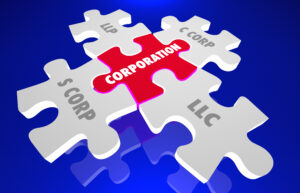Tax Filing Mistakes
Tax Filing Mistakes
Tax return anxiety is on the rise as the federal tax filing date looms. The prospect of filing an erroneous return increases as more rely on tax software to help prepare their returns. For the week ending March 28, more than 10,000 electronic returns were filed from home computers, an increase of at least 10% from the previous year. Within the same week calls to the IRS increased dramatically as well- the IRS fielded close to a million and a half calls per day. To allay some of the fears, the Internal Revenue Service produces yearly advice on how to avoid common tax filing mistakes. Reproduced below are the top ten common errors we have frequently seen among self-prepared returns.
1. Choosing the wrong filing status. Taxpayers should confirm that the filing status (i.e., single, married filing jointly, married filing separately, head of household, qualifying widow(er) with dependent child) selected on the return is correct. For example, taxpayers often incorrectly claim “head of household” filing status without meeting the requirements for that status. In addition to delaying the processing of the return and any refund, designating the wrong filing status on a return also may affect a taxpayer’s eligibility for the Earned Income Credit. The Instructions to the 2007 Form 1040 provide detailed information to assist taxpayers in choosing their correct filing status.
2. Failing to include or using incorrect social security numbers. The names and social security numbers for the taxpayer, taxpayer’s spouse, dependents, and qualifying children for the Earned Income Credit or Child Tax Credit must be included on the return exactly as they appear on the social security cards.
3. Failing to use the correct forms and schedules. Taxpayers should review the instructions to all applicable forms and schedules to be sure they have correctly used, and accurately completed, each form or schedule.
4. Failing to sign and date the return. Taxpayers must sign and date their return under penalties of perjury. If the return is not signed, it will not be accepted as filed by the Service. Both spouses must sign a joint return.
5. Claiming ineligible dependents. Taxpayers may claim a person as a dependent only if that person meets the legal definition of a dependent. Taxpayers should consult the Instructions to Form 1040 or 1040-A to confirm that a person qualifies as a dependent. Each dependent must have a valid Social Security number (or other Taxpayer Identification Number, as applicable), which must be included on the tax return. The failure to include a dependent’s name and Social Security number, or claiming an ineligible dependent, may result in an underpayment of tax and/or a denial of the Earned Income Credit.
6. Failing to pay and report domestic payroll taxes. Taxpayers employing household workers, such as a house cleaner, an in-home caregiver, or a nanny, must report and pay payroll taxes for those individuals when the payments exceed certain threshold amounts. Failure to pay and report payroll taxes may result in the assessment of additional tax due, interest on the unpaid amounts, and penalties. The Instructions to the Form 1040, Publication 926 (Household Employer’s Tax Guide), and Publication 15-A (Employer’s Supplemental Tax Guide) contain detailed information to assist taxpayers in determining whether an individual providing household help is a household employee for whom the taxpayer must report and pay payroll taxes.
7. Failing to report income because it was not included on a Form W-2, Form 1099 or other information return. Taxpayers must include on their tax returns income reported on a third-party information reporting statement such as a Form W-2 or Form 1099, or another similar statement. But even if income was not reported on a third-party reporting statement, taxpayers must still report all income. Failure to report all income may result in the assessment of additional tax due, interest on the unpaid amounts, and penalties.
8. Treating employees as independent contractors. Employers may not treat an employee as an “independent contractor” to avoid paying and reporting payroll taxes. Employers who improperly treat an employee as an independent contractor may be liable for additional tax due, interest on the unpaid amounts, and penalties. Publication 15-A (Employer’s Supplemental Tax Guide) contains detailed information to assist taxpayers in determining whether an individual is an employee or an independent contractor.
9. Failing to file a return when due to a refund. Taxpayers must file a return to claim a refund of withheld taxes when a refund is due. Taxpayers will forfeit refunds of withheld tax if a return requesting a refund is not filed within three years of the due date.
10. Failing to check liability for the alternative minimum tax. Taxpayers should determine whether the alternative minimum tax, or AMT, applies. If a taxpayer is liable for AMT but does not include it on the return, the Service will determine the taxpayer’s liability and may reduce or deny a requested refund or assess any additional tax due, interest on the unpaid amounts, and penalties.
i(2007, 04 09). Common Mistakes on Tax Returns. Retrieved March 25, 2008, from Internal Revenue Bulletin – April 9, 2007 – Notice 2007-35 Web site: http://www.irs.gov/irb/2007-15_IRB/ar09.html
We hope you found this article about “Tax Filing Mistakes” helpful. If you have questions or need expert tax or family office advice that’s refreshingly objective (we never sell investments), please contact us or visit our Family office page or website www.GROCO.com.
To receive our free newsletter, contact us here.
Subscribe our YouTube Channel for more updates.

Alan Olsen, is the Host of the American Dreams Show and the Managing Partner of GROCO.com. GROCO is a premier family office and tax advisory firm located in the San Francisco Bay area serving clients all over the world.
Alan L. Olsen, CPA, Wikipedia Bio

GROCO.com is a proud sponsor of The American Dreams Show.

The American Dreams show was the brainchild of Alan Olsen, CPA, MBA. It was originally created to fill a specific need; often inexperienced entrepreneurs lacked basic information about raising capital and how to successfully start a business.
Alan sincerely wanted to respond to the many requests from aspiring entrepreneurs asking for the information and introductions they needed. But he had to find a way to help in which his venture capital clients and friends would not mind.
The American Dreams show became the solution, first as a radio show and now with YouTube videos as well. Always respectful of interview guest’s time, he’s able to give access to individuals information and inspiration previously inaccessible to the first-time entrepreneurs who need it most.
They can listen to venture capitalists and successful business people explain first-hand, how they got to where they are, how to start a company, how to overcome challenges, how they see the future evolving, opportunities, work-life balance and so much more..
American Dreams discusses many topics from some of the world’s most successful individuals about their secrets to life’s success. Topics from guest have included:
Creating purpose in life / Building a foundation for their life / Solving problems / Finding fulfillment through philanthropy and service / Becoming self-reliant / Enhancing effective leadership / Balancing family and work…

MyPaths.com (Also sponsored by GROCO) provides free access to content and world-class entrepreneurs, influencers and thought leaders’ personal success stories. To help you find your path in life to true, sustainable success & happiness. It’s mission statement:
In an increasingly complex and difficult world, we hope to help you find your personal path in life and build a strong foundation by learning how others found success and happiness. True and sustainable success and happiness are different for each one of us but possible, often despite significant challenges.
Our mission at MyPaths.com is to provide resources and firsthand accounts of how others found their paths in life, so you can do the same.
How to Bring in a New Partner
How to Bring in a New Partner By Matt Dickstein, Business Attorney In this article, I will give you a quick overview of how do you buy into a company to bring in a new shareholder or partner to help with your business. If you are on the other side of the table as…
The Pros & Cons of S-Corporation Status
The Pros & Cons of S-Corporation Status If the number of shareholders in your corporation is small, you may think that becoming an S-Corporation is the right move, but you should weigh the advantages and disadvantages first. Advantages of S-Corporation Status One of the main advantages of S-Corporation status is that it avoids the double…
What is Sole Proprietorship?
What is Sole Proprietorship? A sole-proprietorship is a business that is owned by one person or by a husband and wife. Unless the business is formed as a corporation or a limited liability company, it will be a sole-proprietorship by default. One of the biggest advantages of operating a business as a sole-proprietorship is that…
Conducting Your Business as a Corporation
Conducting Your Business as a Corporation The limited personal liability of a corporation isn’t ironclad. In the event the business ends up owing more money to a creditor than it has the ability to pay, the creditor will then look to the business owner. Under a legal theory known as “piercing the corporate veil,” if…



